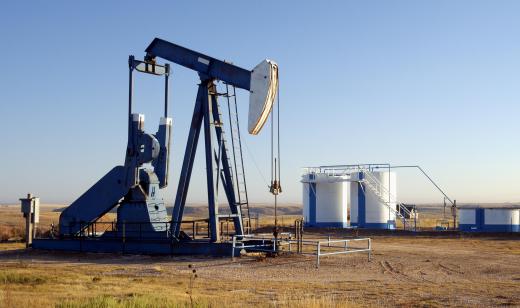A stripper well is a low-yield oil or gas well located in the United States. Although these wells had been in operation for decades with little national attention, during the early 21st century, stripper wells became an area of interest due to the United States' desire to end its foreign dependency on oil. These wells usually produce less than 10 percent of the nation's total oil and gas needs and less than 20 percent of the nation's domestically produced fuel. Additionally, they are often not cost effective. Since 2000, however, steps have been taken to increase the oil and gas production and decrease the operating costs of stripper wells.
In 2008, over 400,000 stripper wells existed across the United States. Each well only produced ten or fewer barrels of oil a day. Conversely, large companies may produce thousands of barrels daily at an individual well. A stripper well, however, extracts oil or gas from the ground at a slow pace, tapping into reserves that are too small or too difficult to extract for the larger companies to find worthwhile. Often these are wells that once produced more oil or gas but are on the verge of being depleted.

Although stripper wells have low yields, they are still vitally important to the United States in terms of domestic oil and gas suppliers. In 2006, stripper wells accounted for 18 percent of the domestically produced oil and gas in the country. Despite their importance to the domestic production of fossil fuels, stripper wells are often not cost effective and are abandoned when the price of fossil fuels is low. A stripper well may be abandoned with up to two-thirds of its resources still intact, and since all the extraction equipment is removed and the wells sealed, they often remain abandoned because the expense of reopening is too extensive to feasibly consider.
Even a working stripper well can cause excessive expense. Large amounts of water are often produced in these wells and must be pumped out and disposed of in order to reach the oil or gas also in the well. Additionally, excess water can slow down the extraction of the fuel, causing a smaller yield and thus less profit.
In 2000, the Stripper Well Consortium was formed. Located in Pennsylvania, the Consortium attempts to further research into more efficient and cost effective ways to extract oil from stripper wells. For example, one project involved developing technologies to reduce the water transport costs and water extraction times in these wells.
